On October 25 the world celebrates 133 years since the birth of Pablo Picasso – a Spanish painter, ceramicist, sculptor and stage designer, and ultimately a genius, whose fascinating mastery generated a new epoch in the global history of art.
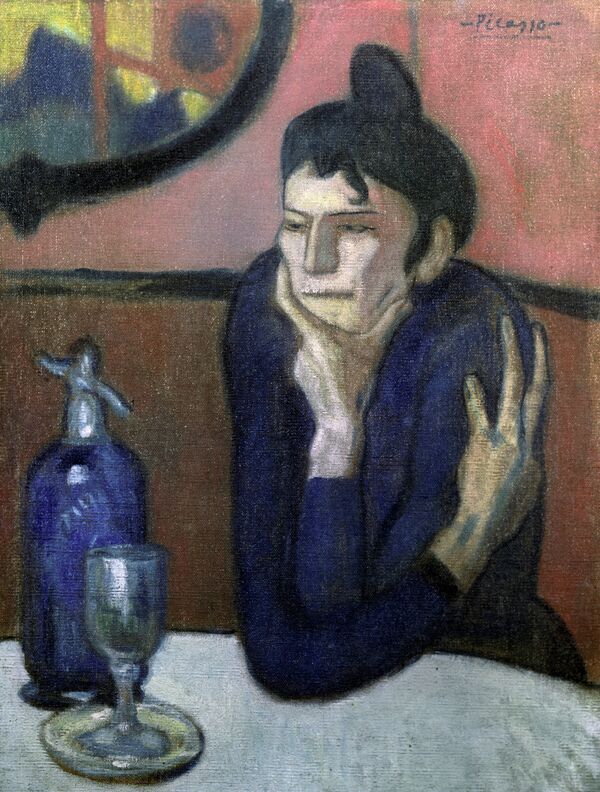
In 1900 Pablo Picasso was astonished by the works of Impressionists he and another artist Carlos Casagemas saw at world’s fair in Paris. The death of Carlos, Picasso’s close friend, left a mournful imprint on his early work known as the Blue Period. His work at this time is awash with lugubrious scenes of human misery depicted in dark blue and green shades. The pale and elongated bodies of Picasso’s blind men and beggars evoke the style of Renaissance painter El Greco.
Above: “Absinthe Drinker” (1901) is very characteristic of the Blue Period, as it vivifies a woman immersed in melancholic dreams drowsed by absinthe – a fetish of those times.
Above: “Absinthe Drinker” (1901) is very characteristic of the Blue Period, as it vivifies a woman immersed in melancholic dreams drowsed by absinthe – a fetish of those times.
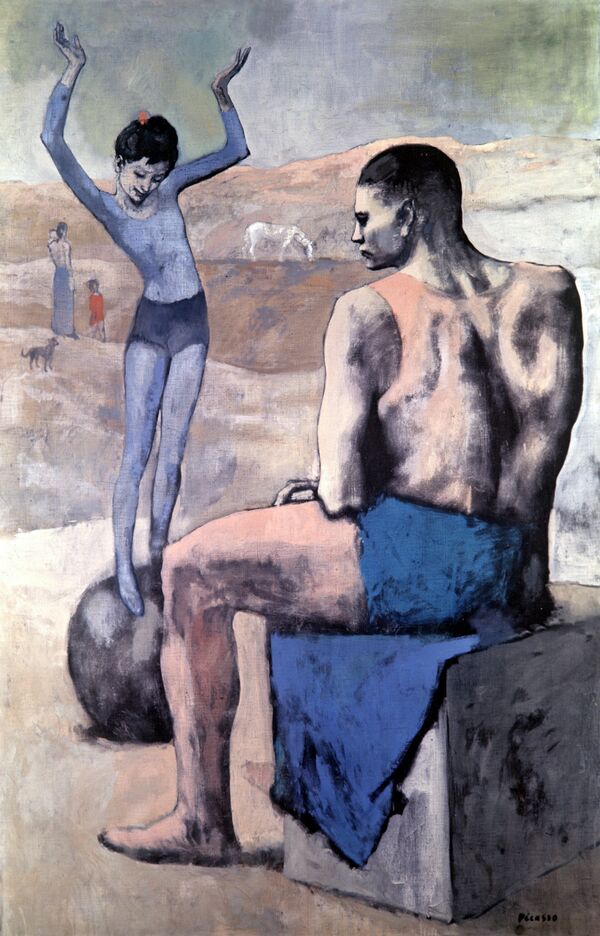
It took years for Picasso to reconcile his loss. After his grief alleviated, Picasso felt better and embarked upon a new style, now referred to as his Rose Period. The name derived from the lightsome, cheerful and optimistic paintings dominated by golden rose and grey rose colors. Picasso found inspiration in circus performances and focused on painting clowns, acrobats and dancers.
Above: “Girl on the Ball” painted in 1905 is regarded as the transition work from the Blue to the Rose Period.
Above: “Girl on the Ball” painted in 1905 is regarded as the transition work from the Blue to the Rose Period.
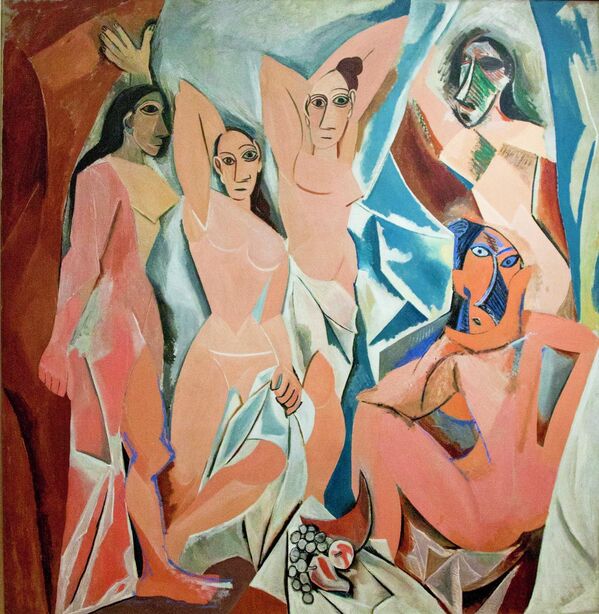
In 1907 Pablo Picasso experimented with analyzing and breaking up painted objects into clearly distinguishable stereometric parts. His idea revolutionized the artistic world and gave birth to an avant-garde movement named Cubism. Picasso mentioned that his new initiative was influenced by Iberian sculpture.
Above: “The Young Ladies of Avignon” inaugurated Cubism in 1907.
Above: “The Young Ladies of Avignon” inaugurated Cubism in 1907.
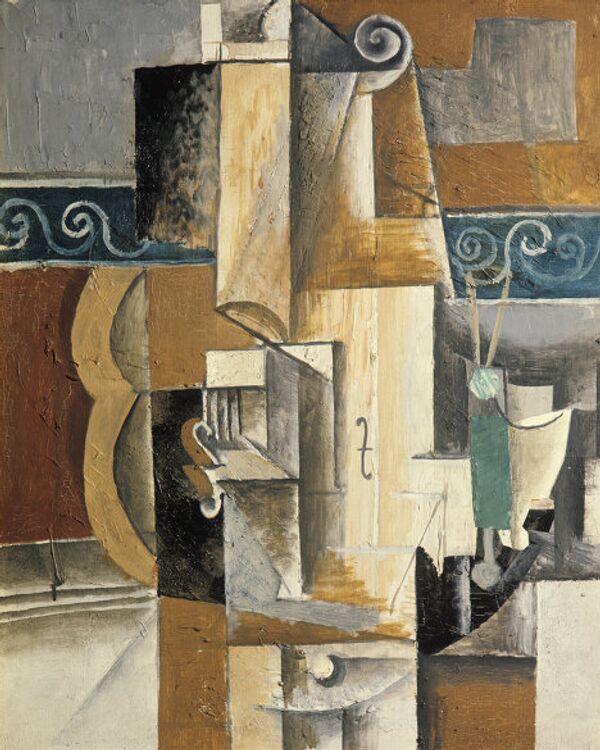
In his Cubist works, Picasso extended and broke the volume of objects, sliced them into planes and faces extending into space. He made the perspective projection disappear, limited the palette to monochromes, tried to make his pictures emanate the sense of weight, and encoded secret messages into them. To obtain a touch with reality, Picasso filled his pictures with match boxes, wine bottles, phone numbers, pipes and other elements of everyday life.
Above: “Guitar and Violin”, a bright example of analytical Cubism. 1913.
Above: “Guitar and Violin”, a bright example of analytical Cubism. 1913.
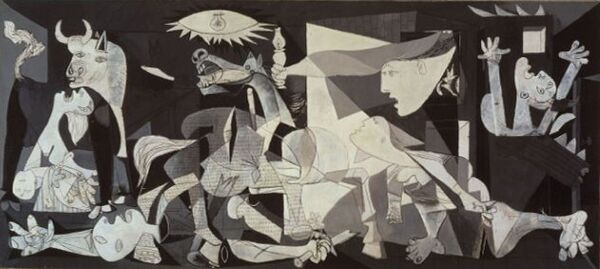
Nazi Germany’s merciless and devastating bombing of Spanish town Guernica in 1937 inflicted heavy soul wounds on Pablo Picasso. The Spanish artist responded with the gigantic picture “Guernica”. The light and dark monochromatic colors convey blazing fire. But the artist left some space for hope which is symbolized by a long arm with a torch.
Above: “Guernica”, 1937. A Gestapo officer saw the picture and asked Picasso: “Did you create it?” – “No, you created it,” – replied the artist.
Above: “Guernica”, 1937. A Gestapo officer saw the picture and asked Picasso: “Did you create it?” – “No, you created it,” – replied the artist.
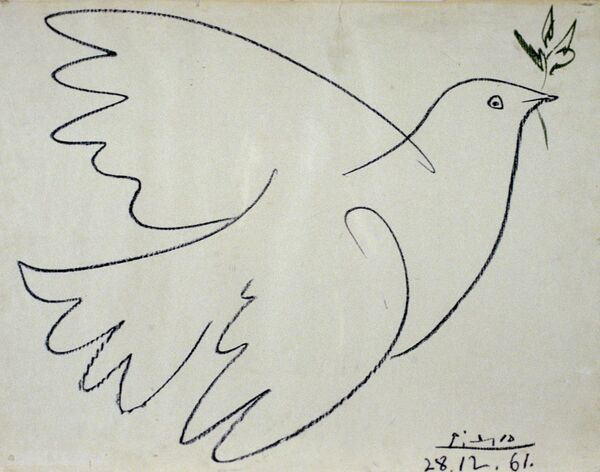
In 1944 Picasso joined the French Communist party. Five years later he drew “The Dove of Peace” which helped popularize the global symbol. “I stand for life against death; I stand for peace against war,” the humanist painter said.
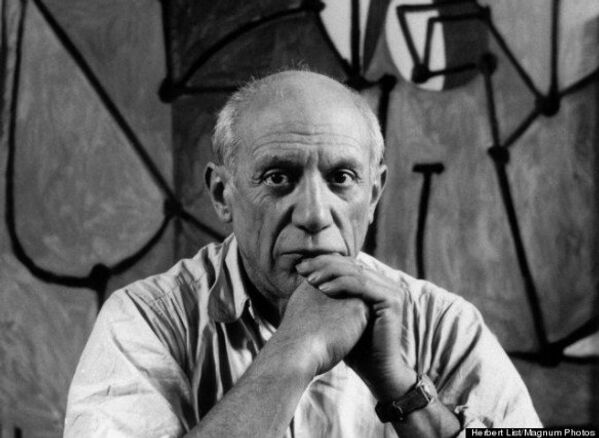
“When I was a child, my mother said to me, ‘If you become a soldier, you’ll be a general. If you become a monk, you’ll end up as the pope.’ Instead I became a painter and wound up as Picasso.”
Above: Rue des Grands Augustins. Pablo Picasso at his studio. Paris, 1948.
Above: Rue des Grands Augustins. Pablo Picasso at his studio. Paris, 1948.

The seemingly unsurpassable record was broken by another Picasso work – “The Dream” (1932), again featuring sleeping Marie-Thérèse Walter. In 2010, collector Steven Cohen wanted to purchase it, but the owner Steven Wynn casually pricked the picture with his elbow, and the deal fell through. But three years later the picture was after all sold for $155 million, still the highest price for a painting ever.
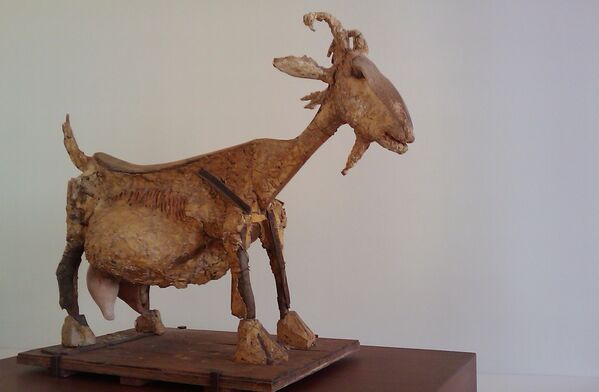
Picasso is best known for his painted masterpieces; however, his genius nature found reflection in sculpture as well. “The She Goat” (1950) is a life-size bronze statue of a pregnant female goat, which mirrors the master’s rising positive attitude to the world.
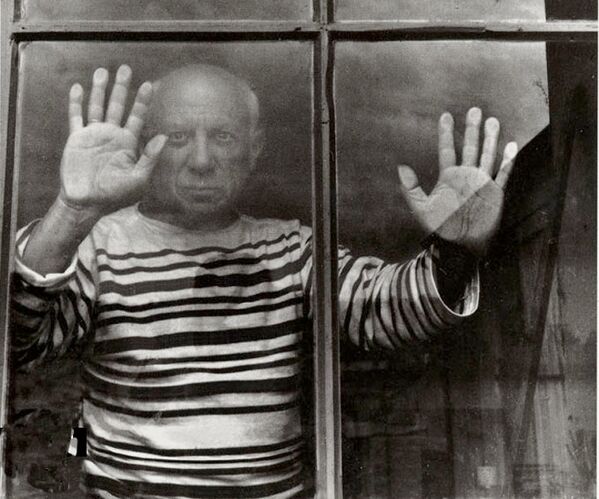
He passed away in 1973 at the age of 91. Reportedly, his last words were “Drink to me. Drink to my health. You know I can't drink any more.”

